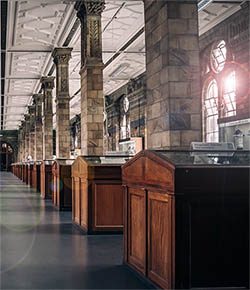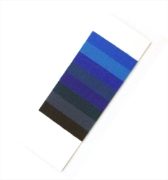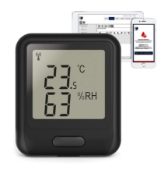Light Duties - Monitoring and protecting from UV in a museum or gallery
Light can be damaging for collections, the monitoring of light radiation is part of the fundamental environmental management museums and galleries cannot ignore. With many tools available to help those charged with the responsibility of care for exhibits, the job is becoming easier.

> | View all light meters click here
Problems
Light and UV radiation is rarely a constant. Levels will change dependent upon time of day, or year, or changes to the surrounding environment such as new exhibits, or the removal of an exhibit. As such, it is very difficult to ‘spot check’ exhibits or storage areas as the values could well change by the second. This is, of course, truer for those who are utilising more natural light and have a less controlled environment.
Spot or not?
The effects of light are cumulative, as a result, an object’s total light exposure is important data to collect if your aim is ‘protection’. As mentioned above, spot checking won’t give you this information, for higher risk objects such as; textiles, watercolours, prints, this could be bad news. However, if you are simply surveying visible light in respect to the aesthetics and accessibility of an exhibit, spot checking may well be sufficient.
What is ‘light’?
Seems a rudimentary question, however, it’s important to remember that not all light is visible. Light is radiation, some of it visible with the human eye, much of it is invisible – so it’s important to employ some tools to assist with the collection of light level data. Breaking light radiation down into measurable units of Lux, UV, Infrared, provides some insight into the potential damage the lighting, either natural or artificial, could cause, or when planning a new exhibition.
- Lux – Visible light, a measure of the intensity of visible light in one square metre - wavelengths between around 380-750 nm.
- UV - Ultra Violet, harmful radiation invisible to the human eye – Wavelengths between 10-400 nm.
- IR – Infrared, thermal radiation invisible to the human eye – Wavelengths between 750-1200 nm.
> | View all light meters click here
How do you measure it?
Dependent upon your purpose, there are numerous tools available to measure or monitor exposure. Once you know which parts of the light spectrum are important, you can choose a tool or instrument to measure or monitor it.
Visible Light
The amount of visible light is important, not only to check illumination in work areas, galleries etc but also to control damage to light sensitive objects that is also caused by normal light. Measurements can be displayed as Lux or Foot-candles.
Ultraviolet (UV)
For many years it has been recognised that one of the major causes of damage to museum objects and other sensitive objects, soft furnishings etc. is the effect of light radiation. The most damaging part is its ultraviolet content. Measurements can be taken of the proportion of UV present (µW/lumen), the total amount of UV (mW/M²)
Thermal Radiation (IR)
The measurement of thermal radiation (shown as W/M2) allows the user to estimate how much solar heat is coming through windows. Can be useful check the performance of heat reflecting films, measure the heating effect of lamps on objects etc.
Tools of the trade

 Blue wool cards
Blue wool cards are the most economic way of monitoring the fading caused by light in any location. By covering a portion of the card, therefore preventing any light exposure, you can visibly monitor fading on the card's blue scale. The cards give you an indication of the intensity of light and damage that exhibits could experience. The blue wool card is also known as a dosimeter as it measures the cumulative effect of light.
Meters and Data Loggers - Using electronic meters enables spot-checking for light levels, with upgrades available for the logging of light data. Some meters will measure specifics, such as Lux or UV, and some will have combined measurement options. Within the PEL range of Light and UV meters there are the following combinations;
Click on the links above to see more specific information on the measurements each of these meters provide.
Each of the instruments are available as a meter or as a monitor with data logging. The instruments are also designed with other relevant environmental measurements included such as, Relative humidity, or temperature. These extra parameters offer a data for a detailed view of the storage or exhibition environment.

What should you do with the data?
If your monitoring has proven that there is an issue, then it is important to take steps to prevent damage to exhibits. As light can be effectively filtered or blocked, remedial steps can have an immediate effect. There are numerous sources of light, some simple resolutions to light exposure problems are:
- The fitting of sleeves to block UV light from fluorescent tubes
- UV blocking film for windows
- UV blocking film for display cases
- Fitting blinds or covering windows
- Switching off or manoeuvring of lighting
- Moving sensitive items, e.g. moving from a top shelf to a more sheltered position
- Replace and renew light sources to low energy LED or fibre optic
Any investment made to prevent damage caused by light could actually be offset, and even save funds in the long run. The reduced requirement for conservation work on damaged objects would be the main cost saving, coupled with energy efficiency improvements a survey may indicate as necessary. Museums and galleries could benefit from monitoring their lighting both financially, aesthetically, all in the best interests of displayed and stored objects and works of art.
For our range of light meters and monitors – Click here |
For our range of UV filtering film – Click here